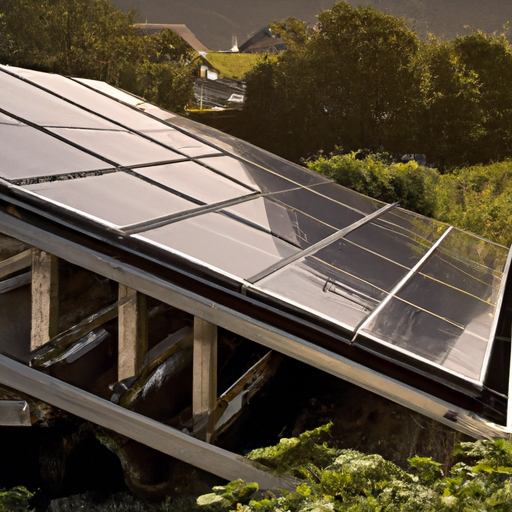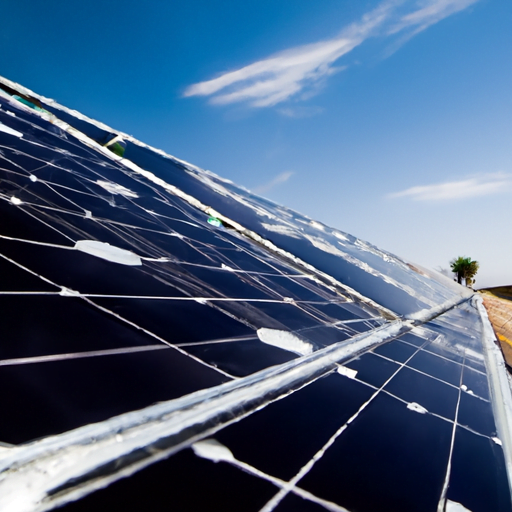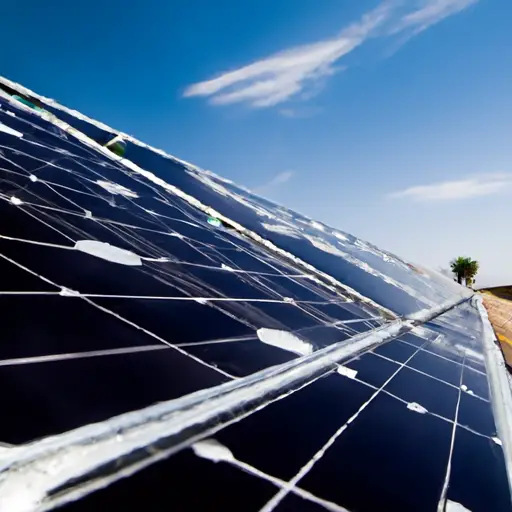So, have you ever thought about living off-grid? You know, being completely self-sufficient and independent from the electricity grid? It sounds pretty appealing, doesn’t it? No more monthly bills, no more reliance on fossil fuels. One of the most popular options for off-grid living is solar power. But here’s the thing – solar power does have its limitations.
Sure, solar power is a great source of renewable energy, and it has made significant advancements in recent years. But it’s not a perfect solution for everyone. Firstly, the initial cost of installing solar panels can be quite high. It’s an investment that may take several years to pay off. Additionally, the amount of energy you can generate is dependent on factors like the climate and the size of your solar panel array. So, if you live in an area with limited sunlight or have a small rooftop, solar power may not be as effective for you.
Furthermore, solar power is intermittent. It only functions when the sun is shining, and its production can be affected by factors like cloud cover and shading. This means that you may not have continuous and consistent power supply throughout the day. And let’s not forget about the issue of energy storage. Solar power needs to be stored in batteries for use during cloudy days or at night. However, batteries can be expensive, require regular maintenance, and have a limited lifespan.
While solar power does have its limitations, it’s important to remember that it can still be a viable option for many. In our upcoming article, we’ll dive deeper into the pros and cons of solar power, and explore alternative solutions for off-grid living. So, stay tuned and keep an open mind. There’s a lot more to learn about the potential of solar power and how it can fit into your lifestyle.

Introduction
Solar power has gained significant popularity in recent years as a clean and renewable energy source. Many individuals and organizations are now using solar power to reduce their impact on the environment and save on electricity bills. While solar power offers numerous benefits, it also has its limitations. In this article, we will explore the limitations of solar power and how they can affect its efficiency and effectiveness.
Understanding Solar Power
Before delving into the limitations, it is essential to understand how solar power works. Solar power is generated using photovoltaic (PV) cells, which convert sunlight into electricity. These cells are typically made from silicon, a highly renewable material. When sunlight hits the PV cells, it excites the electrons within the cells, creating an electric current. This current is then converted into usable electricity using an inverter.
Growing Popularity of Solar Power
The increasing popularity of solar power can be attributed to several factors. Firstly, solar power is a renewable energy source. Unlike fossil fuels, which are finite in supply, solar power relies on the endless supply of sunlight. This makes solar power a sustainable solution for meeting energy demands.
Secondly, solar power offers reductions in electricity bills. By generating and using your own solar power, you can significantly reduce your reliance on the grid and lower your monthly electricity costs. This financial benefit is particularly appealing to homeowners and businesses looking to save money in the long run.
Lastly, solar power has a low maintenance cost. Once the initial installation is complete, solar panels require minimal maintenance. They are designed to withstand various weather conditions and generally have a long lifespan. This makes solar power a cost-effective and hassle-free solution for obtaining electricity.
Advantages of Solar Power
Renewable Energy Source
One of the significant advantages of solar power is that it is a renewable energy source. Solar power harnesses the energy from the sun, an abundant resource that will continue to be available for billions of years. Unlike fossil fuels, which contribute to environmental pollution and are expected to deplete within decades, solar power offers a sustainable and clean alternative.
Reduced Electricity Bills
Another advantage of solar power is the potential for reduced electricity bills. By generating your own solar power, you can significantly decrease your reliance on the grid and, therefore, reduce your monthly electricity costs. The savings can be significant over the long term, especially if you invest in a large enough solar power system to meet most or all of your energy needs.
Low Maintenance Cost
Solar panels require minimal maintenance, which is another advantage of solar power. Once the panels are installed, they require little to no ongoing maintenance. Occasionally, you may need to clean the panels to remove dirt or debris that could hinder their efficiency. However, overall, solar panels require far less maintenance than traditional power generation methods, resulting in lower costs and less hassle for homeowners and businesses.

Limitation 1: Intermittent Power Generation
While solar power has numerous advantages, it also has some limitations to consider. One major limitation is its intermittent power generation. Solar power is reliant on sunlight to generate electricity, which means it is not available 24/7. During cloudy days or nighttime, solar panels cannot generate electricity.
Dependency on Weather Conditions
Solar power is highly dependent on weather conditions, particularly the availability of sunlight. Cloudy days or regions with frequent rain can significantly impact the efficiency of solar panels. If you live in an area with limited sunlight, the amount of electricity generated by your solar panels may be lower than expected, affecting your overall energy production.
Nighttime Power Generation
Another limitation of solar power is its inability to generate electricity at night. Since solar panels rely on sunlight to produce electricity, they are unable to generate power when the sun is not shining. This means that alternative sources of electricity, such as batteries or grid connection, are required to meet nighttime energy demands. The additional equipment and infrastructure needed can increase the overall cost of a solar power system.
Limitation 2: High Initial Cost
Another significant limitation of solar power is its high initial cost. The cost of installing solar panels can be a deterrent for some individuals or businesses, as it requires a considerable upfront investment. Several factors contribute to the high initial cost of solar power.
Cost of Solar Panels
The primary cost associated with solar power is the purchase and installation of solar panels. Solar panels vary in price based on their quality, efficiency, and size. Generally, higher-quality panels that produce more electricity cost more upfront. However, it is essential to consider the long-term savings on electricity bills when evaluating the cost of solar panels.
Battery Bank Installation
To mitigate the intermittent power generation issue, some solar power systems include battery banks for energy storage. These batteries store excess electricity generated during the day, allowing it to be used at night or during periods of low sunlight. However, the installation and maintenance of battery banks add to the overall cost of a solar power system.
Inverter Cost
In addition to solar panels and battery banks, an inverter is also required in a solar power system. The inverter converts the direct current (DC) electricity generated by the solar panels into alternating current (AC) electricity that can be used in homes or businesses. The cost of an inverter can vary depending on its capacity and efficiency.
Limitation 3: Space Requirements
Solar power systems require adequate rooftop or ground space for the installation of solar panels. This can be a limitation for individuals or businesses with limited space availability.
Adequate Rooftop or Ground Space
To maximize solar power generation, it is essential to have enough space to install a sufficient number of solar panels. Rooftop installations require a suitable roof area with proper sun exposure throughout the day. In some cases, the roof may not have enough space or may be shaded, limiting the number of panels that can be installed. Ground installations, although more flexible in terms of space, require access to open land that is not obstructed by buildings or trees.
Shading and Obstructions
Even with adequate space, shading and obstructions can reduce the efficiency of solar panels. If trees or tall buildings cast shadows on the panels, the amount of sunlight received by the panels will be reduced, thereby lowering the overall power generation. Careful consideration of potential shading and obstructions is crucial during the solar panel installation process to optimize energy production.
Limitation 4: Storage and Grid Integration
Storage and grid integration can pose challenges for solar power systems, particularly when trying to meet energy demands during nighttime or periods of low sunlight.
Battery Storage Capacity
To store excess electricity generated during the day, battery banks are often used in solar power systems. However, the capacity of these batteries is limited, and they cannot store an infinite amount of energy. If the energy demand exceeds the capacity of the batteries, alternative sources of electricity, such as the grid, may be required.
Grid Connection Issues
Integrating a solar power system with the grid can also present challenges. In some cases, grid connection may not be readily available or may require additional infrastructure upgrades. The process of connecting to the grid and ensuring a seamless flow of electricity can be complex and time-consuming, adding to the overall cost and logistical considerations.
Limitation 5: Manufacturing and Environmental Concerns
While solar power is considered a clean energy source, there are manufacturing and environmental concerns associated with the production, waste disposal, and carbon footprint of solar panels.
Production of Solar Panels
The production of solar panels requires the extraction of raw materials, such as silicon, and the manufacturing process itself can be energy-intensive. The production of solar panels generates greenhouse gas emissions and contributes to environmental pollution. However, it is important to note that the environmental impact of solar panel production is significantly lower compared to traditional power generation methods.
Waste Disposal
As with any technology, solar panels have a limited lifespan and will eventually need to be replaced. Proper disposal and recycling of old solar panels are crucial to minimize their environmental impact. Currently, solar panel recycling infrastructure is not widely available, which can pose challenges for the responsible disposal of decommissioned panels.
Carbon Footprint
The manufacturing and disposal processes of solar panels contribute to their overall carbon footprint. While solar power itself is carbon-neutral during operation, the associated emissions from manufacturing, transportation, and disposal should be considered to accurately assess the environmental impact of solar power systems.
Limitation 6: Limited Efficiency
Another limitation of solar power is the limited efficiency of solar panels, which can degrade over time.
Efficiency of Solar Panels
Solar panels have a specific efficiency rating that indicates how much sunlight they can convert into electricity. While the efficiency of solar panels has improved over the years, it is still lower compared to other power generation methods. This means that not all of the sunlight that hits the solar panels is converted into usable electricity.
Degradation Over Time
Furthermore, solar panels can degrade over time due to factors such as exposure to sunlight, temperature fluctuations, and environmental conditions. As the panels degrade, their efficiency decreases, resulting in reduced electricity generation over the lifespan of the panels.
Conclusion
Solar power has numerous advantages as a renewable energy source, including reductions in electricity bills, low maintenance costs, and its positive impact on the environment. However, it also has limitations that should be considered when evaluating its suitability for a particular situation.
The intermittent power generation, high initial cost, space requirements, storage and grid integration challenges, manufacturing and environmental concerns, and limited efficiency are all factors that can affect the effectiveness and efficiency of solar power systems. It is essential to assess these limitations in relation to your energy needs, location, and budget when considering solar power as an option.
To mitigate some of the limitations of solar power, exploring alternative energy sources or implementing strategies such as energy efficiency measures and grid connection can be considered. Balancing the pros and cons of solar power will ultimately help individuals and businesses make informed decisions about their energy generation and consumption practices.




